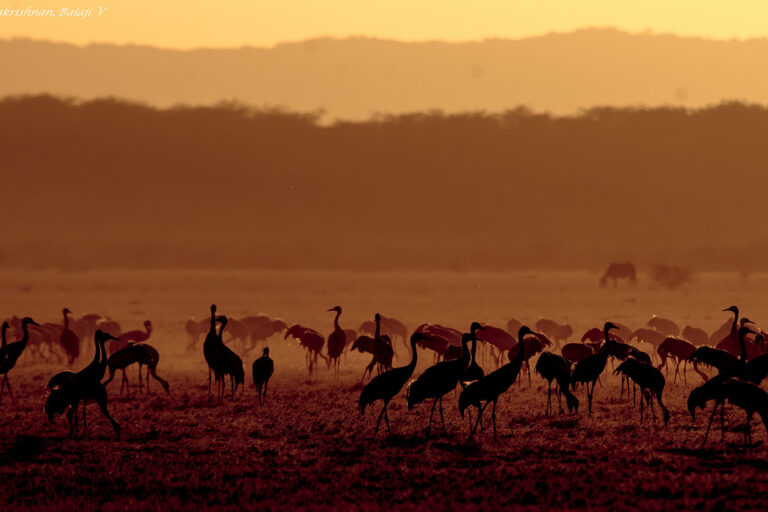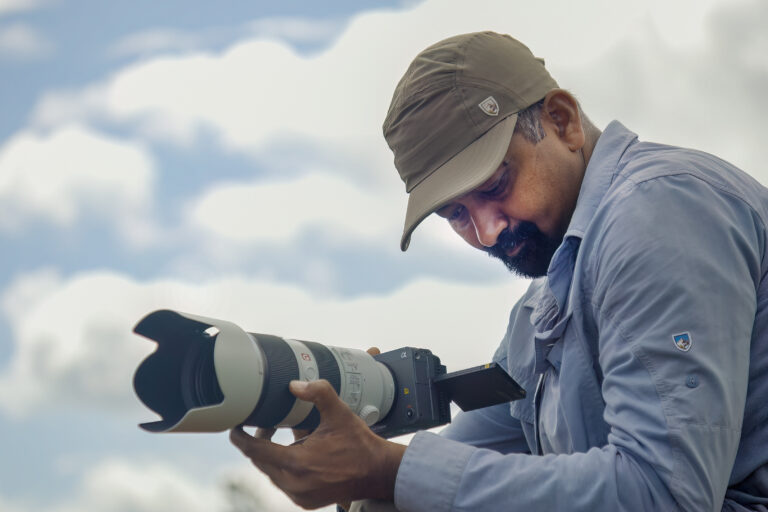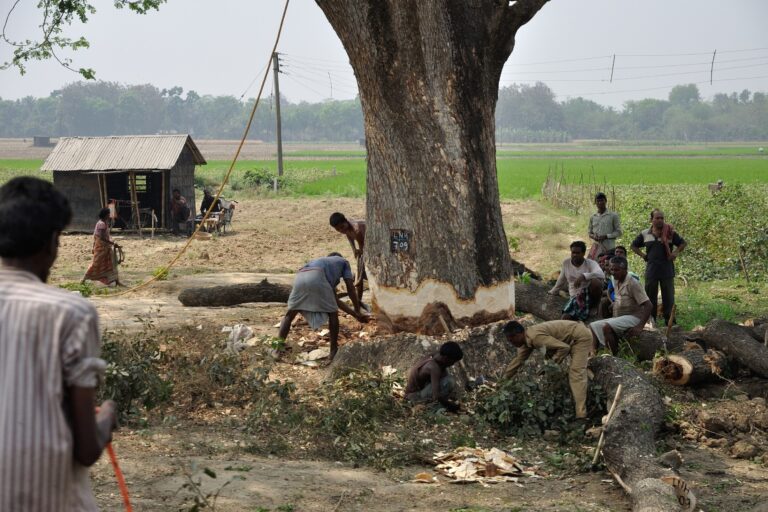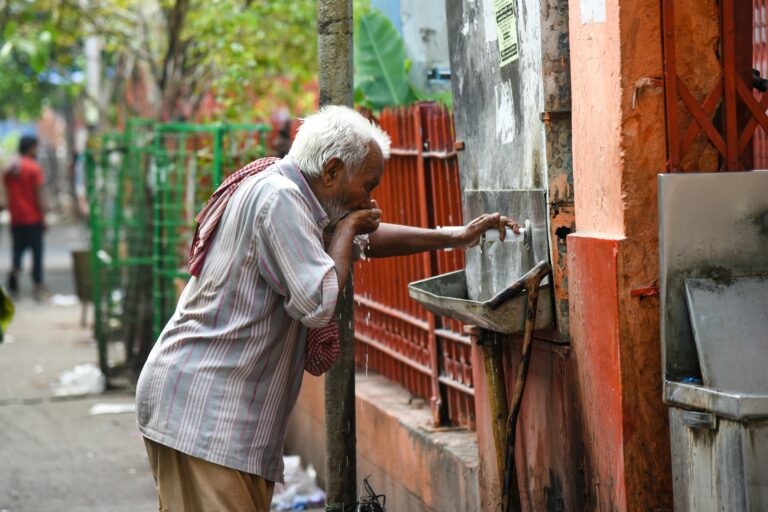- Concerned about the increasing climate crisis, an Indian writer/photographer and British filmmaker are on a journey to capture people’s attention through human stories from the frontlines of climate change in Nepal.
- They aim to communicate issues of climate change and its solutions effectively through current and relatable human narratives and engaging visuals.
- The documentary that will be released around March 2020 will feature multiple impacts of climate change with ‘water’ as a common thread.
How does climate change affect our daily lives? Why and how should we adapt to these changes? Answers to these questions could be daunting, but those are the conversations Neelima Vallangi and Deej Phillips want to spark through their documentary film, temporarily titled Demystifying Climate Crisis Through Human Stories.
The film, which is still under production, will be a collection of stories that illustrate the consequences of climate change on the lives of people in the varied geographical regions of Nepal. Through this, they aim to make the concept of climate change more relatable and make people aware of what they can demand from policymakers on climate action. “The documentary specifically shows the human cost of climate change,” explains Vallangi, an Indian writer-photographer and the brains behind scripting and directing the film.
In 2019, overwhelmed by the disastrous consequences of climate change in India and across the world, Vallangi started a series of conversations on the crisis on Instagram where she has over 45,000 followers. After sharing information on topics such as greenhouse gases, the fossil fuel industry, and climate justice and interacting with her followers, she realised that many don’t necessarily understand how a warming planet could affect them personally.
As South Asian countries such as India and Nepal become increasingly vulnerable to climate change, around 800 million people in the region live in locations projected to become climate hotspots and face a threat of declining living standards. The Global Climate Risk Index 2020 report ranks India 5th and Nepal 20th based on the impacts of extreme weather events and associated socio-economic data. Research shows that, ultimately, people’s perception of the risks posed by climate change in India is heightened by how they imagine their personal situation as climate crisis unfolds – and this perception is often shaped by the media. So, climate change communication invariably becomes critical for public awareness.
Globally, experts are now pushing for further research and communication about the links between climate change, public health and wellbeing as one of the ways to catch audience attention and make the crisis relatable.
Aligned with similar thoughts, Vallangi, while in Nepal on a writing assignment, gathered intimate accounts of lives derailed by events such as floods, scarcity of water, human-animal conflicts – all exacerbated by climate change. Along with Phillips, a filmmaker from London, the two decided to document these present-day impacts on everyday lives.
“If people can’t imagine what climate change does, then they will do nothing about it,” says Vallangi.
Blending emotional stories and science
A woman copes with health disorders as she travels far to get water home, where there is a scarcity of freshwater. A young girl loses her life as a flash flood sweeps away a road. A group of children face hindrances in their training, development and ambitions as their football ground is regularly flooded. With ‘water’ as the central theme of the film, the duo carefully identified stories such as these to illustrate how climate change contributes to too much or too little water, which in turn affects the daily lives of people and communities.
“But how do you connect these stories to climate change? It seems unreasonable to imagine how a one or two-inch rise in sea level could mean an increase in storm surges that can flood your region,” says Vallangi. The roughly 40-minute film which will primarily be targeted towards an urban audience has interviews with scientists and experts from the mountainous country. It will be coupled with animation and motion graphics to explain the science behind occurrences such as increased rainfalls, glacial melting, and so on.
Through these interviews, the filmmakers aim to highlight that apart from climate change itself, vulnerability to it is exacerbated by bad governance and management practices. “We’d like to showcase that policymakers and people in power will have to think of (climate change) adaptation strategies, and as citizens, what you can demand from them,” says Vallangi, who is irked by the extra attention given to individual action over government actions.

How do you ‘see’ climate change?
Toby Smith, the Programme Lead at Climate Visuals, says that visuals, especially photography, are a vital part of communicating climate change as it transcends countries, languages and platforms. But the way climate change and its solutions are represented dictates how people are attracted to the issue and how they perceive it.
Climate Visuals, a project that provides insights and guidance on the visual language of climate change, lists seven principles for visual climate change communication such as portraying real people, and emotionally powerful climate change impacts. Understanding your audience and the platform where the visuals will be displayed is also an important factor for effective communication, says Smith.
Acknowledging that awareness about the causes of climate change and its impacts still needs a lot of work, Smith says that communicating solutions is yet another challenge. “The media and the audiences are hungry for solution-driven stories now. But most solutions are intangible – they are often behavioural or systemic changes as opposed to impacts such as horrific floods, fires and extreme weather events which can fit well in visual narratives.”
Phillips, the documentary’s cinematographer, says that their film’s visual language strives to keep the human character at the centre. “Science and numbers are essential for the story, but people won’t resonate with 10-50-year predictions of the planet. Human faces are needed to make the story relatable, emotional, and to move people,” he says.
The project started in October 2019 as a self-funded passion project and went on to collect around $10,000 through crowd-funding which covers their filming expenses & basic post-production cost. The team is exploring options to air the film with the help of media houses and distributors or directly through YouTube and other social media platforms. “We are also in talks with local partners to screen the film among communities in Nepalese,” says Phillips.
While the first part of the filming has already wrapped up, they plan to raise more funds to hire more post-production resources and visit upper-Himalayas for the last phase of filming in early 2020 and finalise the film by March.
Banner image: A still from the documentary film that aims to highlight the human cost of the climate crisis. Photo by Deej Phillips.
Watch: Youth of northeast India use films to tell stories about their environment and communities.
A shorter version of this story was published on One Earth.














